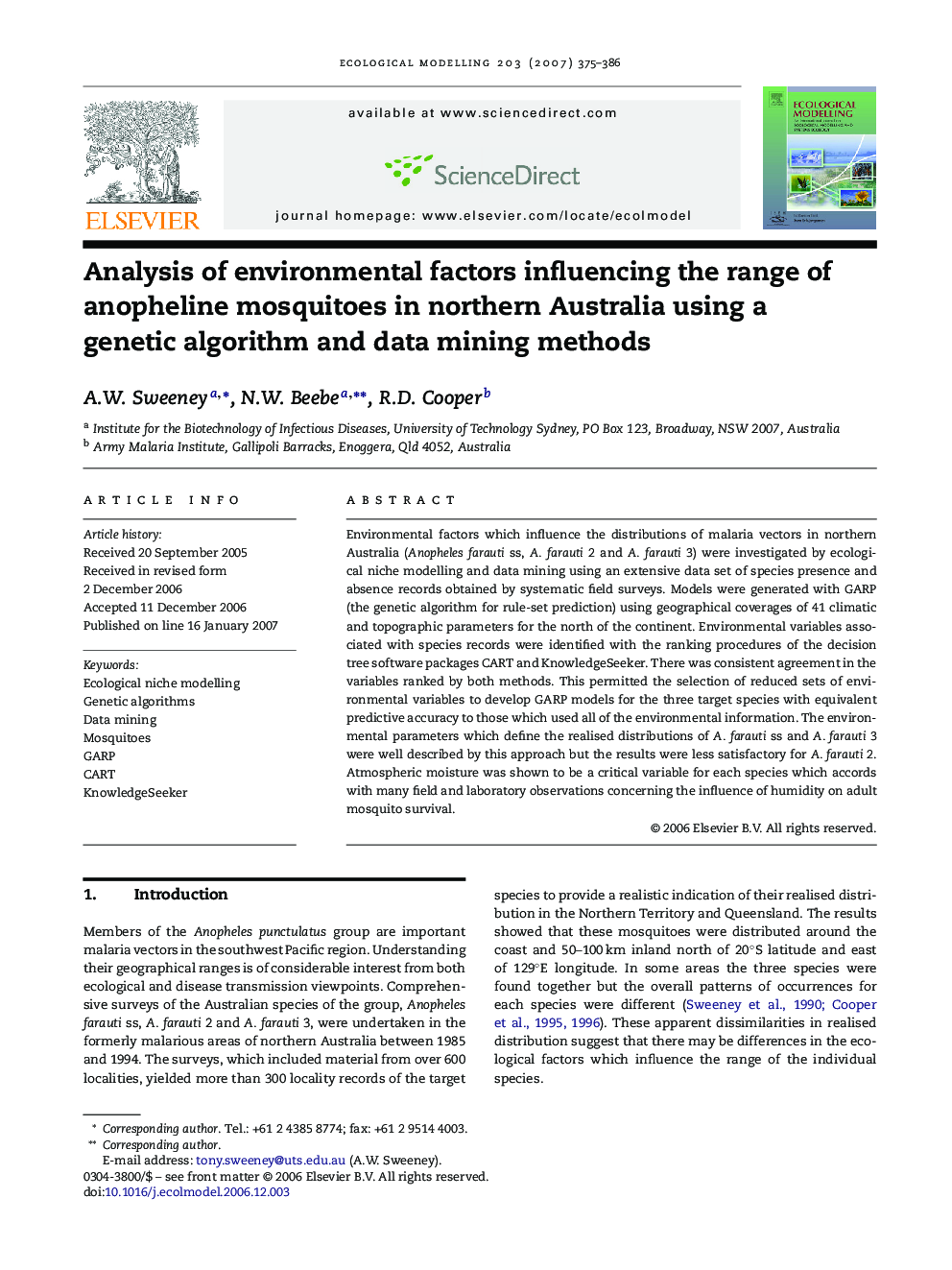| Article ID | Journal | Published Year | Pages | File Type |
|---|---|---|---|---|
| 4378560 | Ecological Modelling | 2007 | 12 Pages |
Abstract
Environmental factors which influence the distributions of malaria vectors in northern Australia (Anopheles farauti ss, A. farauti 2 and A. farauti 3) were investigated by ecological niche modelling and data mining using an extensive data set of species presence and absence records obtained by systematic field surveys. Models were generated with GARP (the genetic algorithm for rule-set prediction) using geographical coverages of 41 climatic and topographic parameters for the north of the continent. Environmental variables associated with species records were identified with the ranking procedures of the decision tree software packages CART and KnowledgeSeeker. There was consistent agreement in the variables ranked by both methods. This permitted the selection of reduced sets of environmental variables to develop GARP models for the three target species with equivalent predictive accuracy to those which used all of the environmental information. The environmental parameters which define the realised distributions of A. farauti ss and A. farauti 3 were well described by this approach but the results were less satisfactory for A. farauti 2. Atmospheric moisture was shown to be a critical variable for each species which accords with many field and laboratory observations concerning the influence of humidity on adult mosquito survival.
Related Topics
Life Sciences
Agricultural and Biological Sciences
Ecology, Evolution, Behavior and Systematics
Authors
A.W. Sweeney, N.W. Beebe, R.D. Cooper,
